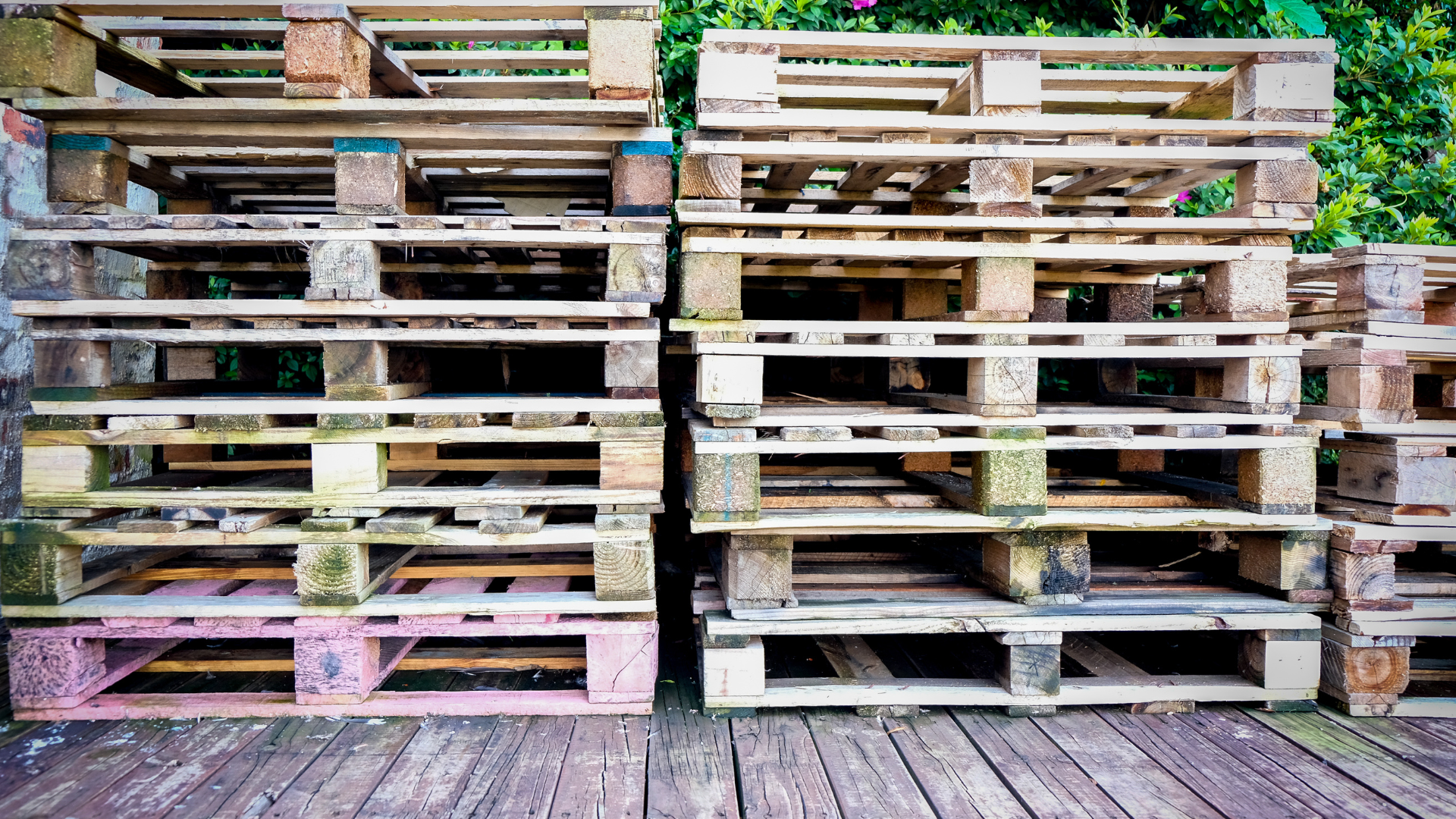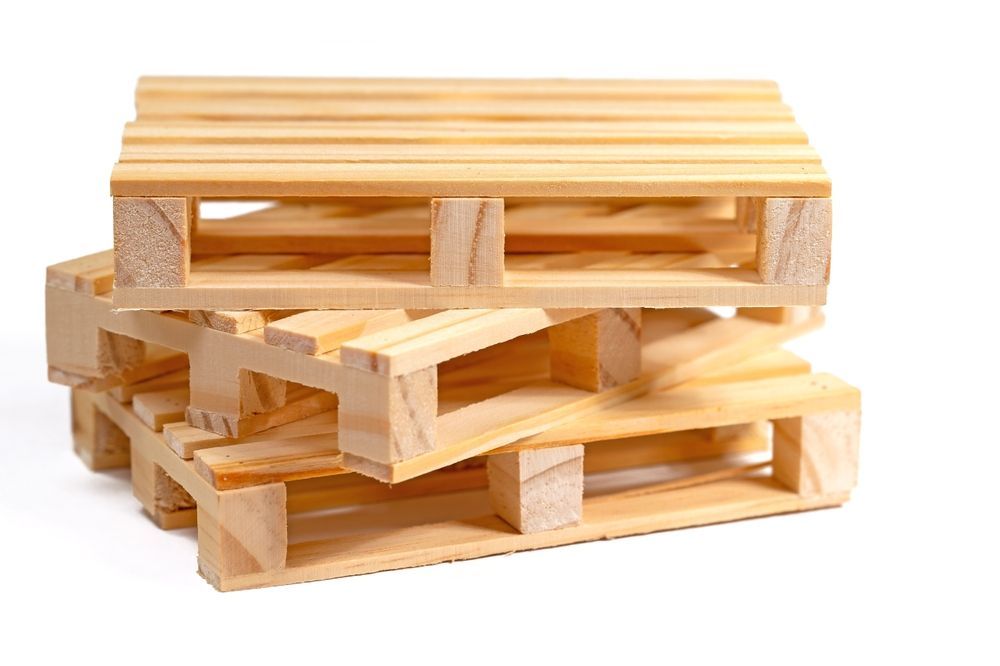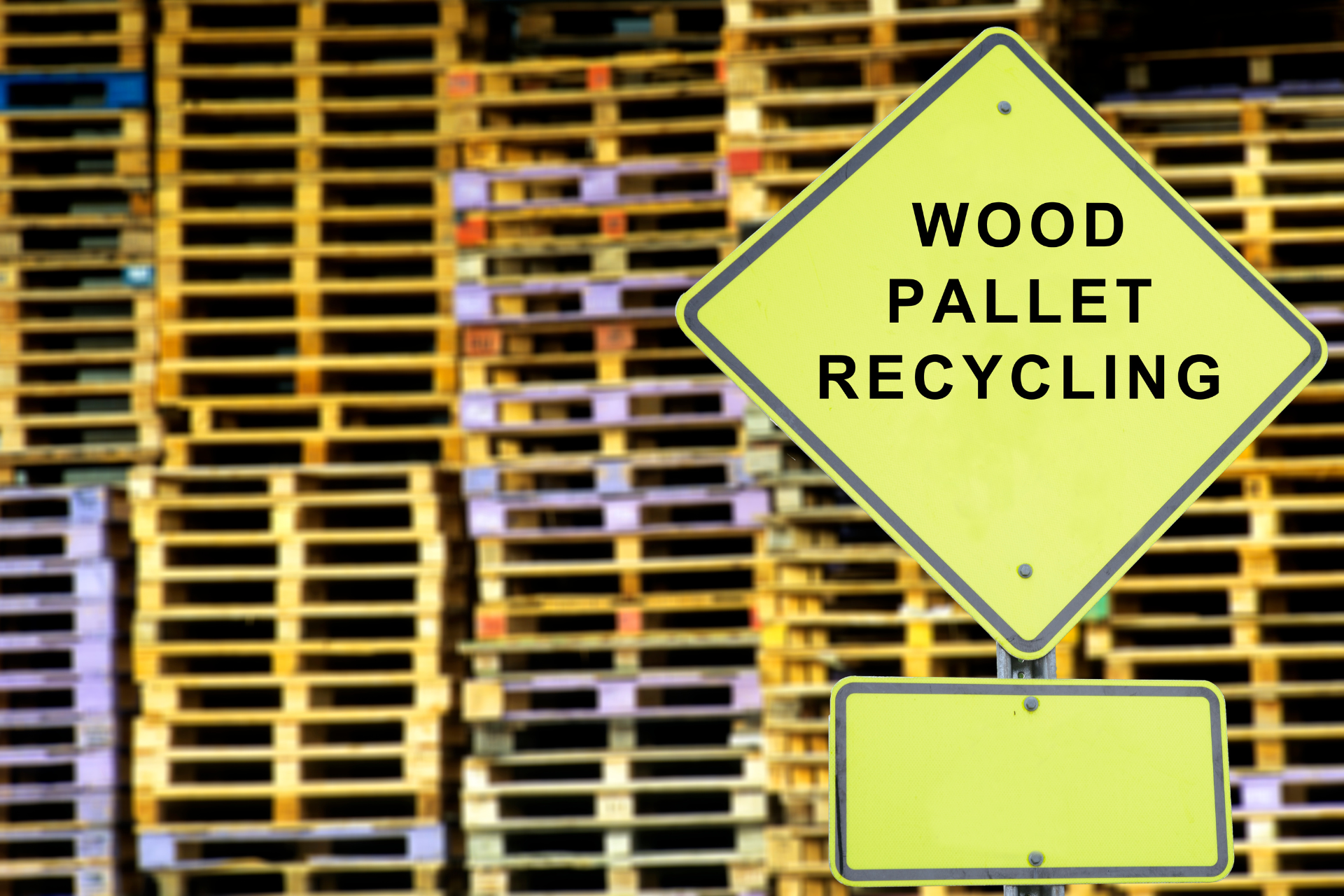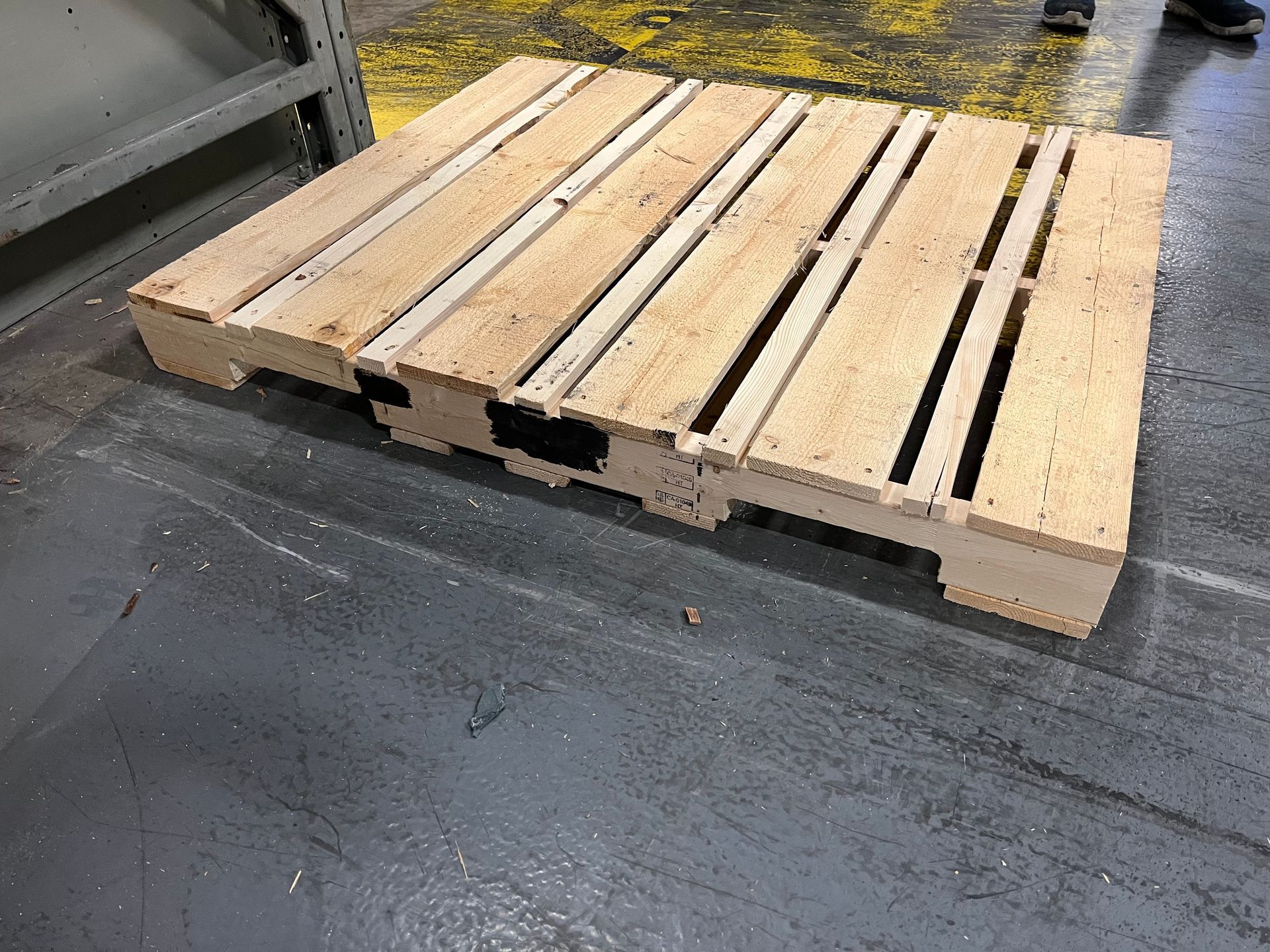In recent years, wooden pallets have emerged as a popular and versatile material for gardening and outdoor projects. Their rustic charm and robustness make them an ideal choice for a variety of creative endeavors. From constructing raised garden beds to crafting unique outdoor furniture, the possibilities with wooden pallets are almost endless. Their appeal lies not only in their aesthetic and practical uses but also in their contribution to sustainable practices, as they are often recycled materials. This blog post delves into the multifaceted world of wooden pallets, exploring how these humble structures can be transformed into stunning and functional additions to any garden or outdoor space. We will cover everything from selecting the right pallets to detailing various project ideas and maintenance tips. Additionally, we'll answer some of the most frequently asked questions about using wooden pallets, ensuring that you have all the knowledge you need to start your next outdoor project.

The Appeal of Wooden Pallets for Outdoor Projects
Wooden pallets, often seen as mundane platforms used for shipping and storing goods, have been increasingly recognized for their aesthetic and functional appeal in outdoor projects. Their rustic, natural look brings a warm, organic charm to gardens and patios, effortlessly blending with the outdoor environment. This raw, unrefined beauty is particularly sought after in trends like farmhouse and industrial-chic decor, where the emphasis is on natural textures and simplicity. Functionally, wooden pallets are incredibly versatile. They can be used as-is for projects like outdoor seating or disassembled for wood to create anything from planters to decorative garden paths.
Beyond their visual and practical versatility, wooden pallets are a sustainable choice. Reusing these pallets in DIY projects reduces waste and the demand for new raw materials, aligning with eco-friendly living practices. Many pallets are made from softwood species that are fast-growing and more sustainable than hardwoods. Their durability ensures they last through multiple uses, whether in their original form or repurposed into new creations. By integrating wooden pallets into outdoor projects, individuals not only add a unique aesthetic touch to their spaces but also contribute positively to environmental conservation, embodying the principles of recycling and sustainability in home and garden design.
Choosing the Right Pallets
Choosing the right wooden pallets for your outdoor projects is crucial for both safety and durability. Start by looking for pallets that are in good condition; avoid those with cracked wood, protruding nails, or excessive wear. A sturdy pallet will ensure longevity and safety in your projects.
It's also important to check the treatment history of the pallet. Look for the IPPC (International Plant Protection Convention) label on the pallet. This label indicates if the wood has been treated with chemicals. Ideally, you want pallets marked with "HT" (Heat Treated), which are safe for use in gardens and outdoor spaces. Avoid pallets labeled "MB" (Methyl Bromide) as they've been treated with harmful chemicals and are not suitable for home projects.
Another factor to consider is the wood type. Softwoods, like pine, are common in pallet manufacturing and are generally safe for use. However, they may not be as durable as hardwoods. If your project requires more strength, seek pallets made from hardwood.
Lastly, consider the size and design of the pallet. Ensure it suits your project needs in terms of size, structure, and weight capacity. With these considerations in mind, you can select the best wooden pallets that are safe, sustainable, and perfect for your outdoor projects.
Preparation and Safety Tips
Preparing wooden pallets for outdoor projects is a crucial step to ensure both the longevity of the project and your safety. Start by cleaning the pallets thoroughly to remove any dirt, grime, or debris. A stiff brush and soapy water work well for this purpose. If you're planning to use the pallets for gardening projects, especially for growing food, it's vital to ensure they are free from harmful chemicals and pathogens.
Once clean, sanding is the next important step. Sanding not only smoothens the surface, reducing the risk of splinters, but it also prepares the wood for any paint or sealant. Use medium to fine-grit sandpaper and pay special attention to edges and corners. Always wear a dust mask during sanding to avoid inhaling wood dust.
Check for and remove any protruding nails or staples, as these can be a safety hazard. Replacing them with new, rust-proof nails or screws can enhance the structural integrity of your project.
If your pallets will be used outdoors, applying a sealant or wood preservative is highly recommended to protect them from moisture and weather elements. Choose a product that's safe for your intended use, especially if the pallets will be in contact with soil or plants.
Finally, always wear appropriate safety gear like gloves, eye protection, and a dust mask when cutting or modifying pallets. These steps ensure that your pallets are not only aesthetically pleasing but also safe and durable for your outdoor projects.
Project Ideas
Wooden pallets offer a treasure trove of possibilities for gardening enthusiasts and DIYers. Here are some project ideas that can transform your outdoor space:
1. Gardening:
Raised Beds: Wooden pallets are ideal for building raised garden beds. Simply stack two pallets for height, secure them together, and line the inside with landscape fabric to retain soil. This elevated bed improves drainage and soil quality, making it perfect for growing vegetables and herbs.
Vertical Gardens: Create a space-saving vertical garden by attaching a pallet upright against a wall or fence. Staple landscape fabric to the back, sides, and bottom, creating pockets to hold soil. Plant herbs, succulents, or small flowers in the slats for a living wall effect.
Planters: Disassemble a pallet and use the wood to construct box planters of various sizes. These can be left natural, stained, or painted to match your outdoor décor. Ensure drainage holes are drilled at the bottom.
2. Outdoor Furniture:
Benches:
Construct a simple yet sturdy bench by securing two pallets for the seat and adding another as a backrest. Sand and paint the bench in a color of your choice. For added comfort, top with outdoor cushions.
Tables:
Create a rustic coffee table by stacking two pallets. Add casters on the bottom for mobility and a glass top for a smooth surface. This makes for a functional and stylish addition to any patio.
Decorative Pieces:
Pallet wood can be repurposed into various decorative items like wall art, signs, or even a rustic outdoor bar.
Step-by-Step Basics for Building a Pallet Planter:
Materials Needed:
A wooden pallet, landscape fabric, staple gun, sandpaper, paint or sealant (optional), and gardening soil.
Preparation:
Clean and sand the pallet. If desired, apply a coat of paint or sealant and allow it to dry.
Maintenance and Upkeep
Proper maintenance is key to ensuring your wooden pallet projects last for years, especially in outdoor environments. Regularly check for any signs of wear or damage, such as loose boards or protruding nails, and repair them promptly. For pallets used in gardening, inspect for soil erosion or water damage, and reinforce the structure if necessary.
To protect against weather elements, apply a water-resistant sealant annually. If your pallets are painted, they may need a fresh coat of paint every couple of years to maintain their appearance and protect the wood.
For pallet gardens, managing soil health is crucial. Refresh the soil periodically and check for pests or diseases that could affect your plants. Also, ensure adequate drainage to prevent waterlogging.
By following these simple maintenance and upkeep steps, your wooden pallet projects will continue to be both beautiful and functional additions to your outdoor space.
Conclusion
Wooden pallets are more than just industrial platforms; they are a canvas for creativity and sustainability. This guide has explored the various ways you can repurpose wooden pallets into functional and aesthetic elements for your garden and outdoor spaces. From raised beds and vertical gardens to rustic benches and tables, the possibilities are endless. Embrace the trend of upcycling and let your imagination lead the way in transforming these simple structures into something extraordinary. Happy crafting!
Frequently Asked Questions
-
Q1: How long do wooden pallets last in outdoor conditions?
With proper care and maintenance, wooden pallets can last several years. Regular treatments with sealant or paint can extend their life significantly.
-
Q2: Are all wooden pallets safe for use in gardening projects?
Not all pallets are safe for gardening, especially if they've been chemically treated. Look for pallets marked with "HT" (Heat Treated), which are safer for gardening use.
-
Q3: How can I tell if a pallet is treated with chemicals?
Check for the IPPC label on the pallet. It indicates the type of treatment the pallet has undergone. Avoid pallets marked with "MB" (Methyl Bromide).
-
Q4: Can wooden pallets support heavy loads in projects like outdoor furniture?
Yes, most wooden pallets are designed to carry heavy loads and can be used to construct sturdy furniture. However, ensure they are in good condition and reinforce if necessary.
-
Q5: Do I need to treat or seal wooden pallets for outdoor use?
Yes, treating or sealing wooden pallets is recommended to protect them from weather elements and extend their lifespan.
-
Q6: How can I acquire wooden pallets for my projects?
Wooden pallets can often be found at local warehouses, shipping docks, or offered for free or at a low cost on online marketplaces.
-
Q7: Are there any legal considerations when using wooden pallets?
Some pallets may be property of the company that owns them. Always obtain pallets legally and ethically.
-
Q8: How can I make my pallet project more environmentally friendly?
Use water-based paints and sealants, and choose pallets that are recyclable or made from sustainably sourced wood.
-
Q9: What tools are necessary for working with wooden pallets?
Basic tools include a hammer, saw, sandpaper, nails, and a staple gun. Safety gear like gloves and goggles is also important.
-
Q10: Can wooden pallets be used for both temporary and permanent outdoor structures?
Yes, wooden pallets are versatile and can be used for both temporary and permanent structures, depending on how they are constructed and maintained.
Working Hours
Monday - Friday : 8 am - 5 pm
Address & Phone Number
Email Address
All Rights Reserved | Consolidated Pallet Co.






